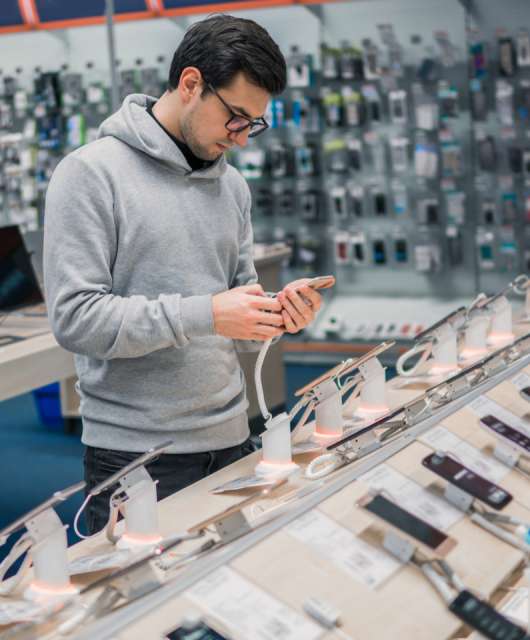Panda Security Introduces Panda Dome: A Flexible Security Solution to Protect Your Digital Life
At Panda Security, we have taken a leap forward in cybersecurity evolution with Panda Dome, our solution that adapts to protect users’ lives.
With Panda Dome, everyone can customize their security solution based on their requirements by adding different layers.
This way, users can have a security solution that meets their needs at any moment of their lives with just one click: antivirus protection, firewall, safe browsing, VPN, parental control, password manager, or Dark Web Monitor.
New Technology
Panda Dome represents an unprecedented evolution. The solution is more intuitive and extremely effective at detecting threats and also uses far fewer resources on the devices it protects.
Panda Dome can scan and monitor all applications running on systems across all devices protected by Panda Security. Moreover, this innovative technology uses Big Data and Artificial Intelligence to ensure comprehensive security for you, your family, as well as freelancers, and small businesses.

A Plan for Every Stage of Your Life with Interchangeable Modules
Panda Dome’s free plan is fully customizable and scalable, enabling you to add specific modules to your security plan. This way, you have a solution completely tailored to your needs. Additionally, it includes a free VPN with a data limit of 150 MB/day and a Multimedia/Gaming mode to guarantee a good user experience at all times.
With Panda Dome, you no longer need to purchase services you do not use or need. You pay for what you use, adding or removing features from your plan.
Like Lego pieces that can be added or removed, a family or individual (whether as a freelancer or for personal use) can purchase specific features available in more comprehensive plans for the most basic ones.
“We are used to customizable solutions tailored to each family member in services such as streaming music or television. Panda Dome is the logical evolution needed in the cybersecurity industry,” says Hervé Lambert, Global Consumer Operations Manager at Panda Security.
So, What Does All This Mean?
Quite simply: From now on, you can ‘build’ your own security solution tailored to your current needs. Our philosophy ensures that Panda Dome adapts flexibly to user requirements at every moment.
Choose the Plan that Fits Every Stage of Your Life
The security plan immediately above the free solution is Panda Dome Essential, which provides innovative technology for high protection across all your devices. Panda Dome Essential keeps your devices safe from all kinds of known or unknown threats, also protecting your Wi-Fi network and ensuring the privacy of your email accounts.
Furthermore, Panda Dome Advanced provides more advanced features, including ransomware protection and parental control. Through powerful technology developed by Panda Security’s R&D&I, you can monitor and protect your children’s online experience.
Panda Dome Complete includes enhanced security features that combine advanced antivirus and anti-ransomware protection with additional tools such as a password manager, data protection (file shredding and encryption), and device optimization, making it the perfect solution for families and multiple devices.
The highest level of protection within Panda Security’s plans is offered by Panda Dome Premium. In addition to all the services included in the other suite packages, this security plan includes VPN Premium, Update Manager, Dark Web Monitor, and Panda Total Care Premium Support, making your digital life easier and more secure.
Maximum Customization with Scalable Modules
Regarding customization, if you are already using the free version, Panda Dome Essential, or Panda Dome Advanced, you can have one or several specific features from higher-tier plans at a much more affordable price.
Among the four modules you can add to each plan, you have VPN Premium, which allows unlimited secure connections from anywhere and any device.
Though its most popular benefit is related to entertainment, this VPN is a secure virtual data tunnel that enables private, anonymous, and unrestricted Internet browsing without geographical or content-based blocks. For example, you could be the first to watch a series premiering in another country or browse without leaving any traces of the websites you have visited.
The same applies to Panda CleanUp, a module included in the Panda Dome Complete plan that speeds up, cleans, and extends the life and performance of your PC. This technology boosts battery life and frees up disk space by removing temporary files, history, and browser cookies. Your device will always be like new.
Panda Security’s new protection paradigm offers a unique user experience, managing all home devices from a single point. It is a service designed and created by and for Panda Security users. For this reason, it has achieved an “excellent” rating, scoring 9 out of 10 among more than 6,000 surveyed customers.
Additionally, because it is created with intelligent technology that leverages Big Data and Artificial Intelligence, it provides comprehensive security for individuals and families, as well as for freelancers and SMBs. This technology is another example of the excellence in detection that Panda Security has been demonstrating for years now and for which it earned the GOLD and SILVER awards from the independent laboratory AV-Comparatives in its 2021 and 2022 Real-World Protection Tests respectively, as well as the Best New Endpoint award from SE Labs in 2023.
In short, Panda Dome represents a cybersecurity revolution, adapting to your life and budget to always make sure you have the protection you need.
What Are You Waiting For to Try It?
FAQS: Frequently Asked Questions about the Panda Dome Line
What Is Panda Dome?
Panda Dome is a line of cybersecurity products from Panda Security. It protects devices from malware, viruses, and other online threats.
What Types of Products Does the Panda Dome Line Include?
The Panda Dome line offers four plans tailored to users’ different needs:
- Panda Dome Essential: Essential antivirus, firewall, safe browsing, and VPN features.
- Panda Dome Advanced: Enhanced security features. Including a Firewall, anti-phishing tools, protection against advanced malware, and parental control for safe browsing.
- Panda Dome Complete: Comprehensive protection with additional tools such as file encryption and shredding, device optimization, and password manager.
- Panda Dome Premium: The best plan in the line. Includes all features of previous products: Premium VPN, update management, Dark Web Monitor, and 24/7 Premium Support.
How Does Panda Dome Protect My Devices?
Panda Dome uses advanced technology to detect and block malware, phishing attempts, and other threats. It provides real-time protection, automatic updates, and cloud scanning for effective security.
Can I Use Panda Dome on Multiple Devices?
Yes, depending on your subscription plan, Panda Dome can be used on multiple devices, including Windows, macOS, Android, and iOS platforms.
Is There a Free Trial Version of Panda Dome?
Yes, Panda Security usually offers the first month free of charge for its products. This lets users try Panda Dome’s features and effectiveness before buying a yearly subscription or renewing a monthly plan. Click here to download Panda Dome.
How Do I Install Panda Dome?
Installation is straightforward. After purchasing the product, you receive a download link. Simply download the installer, run it, and follow the on-screen instructions to complete the installation. More information about how to install Panda Dome.
What Should I Do If I Have Problems with Panda Dome?
If you encounter any issues, you can visit the Panda Security support page for troubleshooting guides or contact customer service for assistance.
Does Panda Dome Include a VPN?
Yes, all versions of Panda Dome include a VPN feature to help secure your Internet connection and protect your privacy while you browse online.
How Frequently Are Updates Released for Panda Dome?
Panda Security periodically updates Panda Dome to improve security features, resolve issues, and enhance overall performance. Users are notified when updates are available.
Can I Customize the Panda Dome Settings?
Yes, Panda Dome enables users to customize various settings: including scan scheduling, firewall configurations, and privacy settings. It adapts to individual needs. Additionally, you can add additional modules to any of your plans:
- Panda Dome VPN: The premium version of our free VPN to protect your privacy wherever you are.
- Panda Dome Family: Much more than just parental control! Protect your loved ones from Internet dangers.
- Panda Dome Passwords: Manage your passwords from a single console without the need to remember them all.
- Panda Dome CleanUp: Improve device performance and extend the life of your PC.
What Free Tools Does Panda Dome Offer?
Panda Dome offers several free tools to help users enhance their online security:
- Panda Dome Free: Antivirus and VPN in one product.
- Password generator: Don’t know how to create complex passwords? No worries. Our password generator does it for you.
- Panda Cloud Cleaner: Removes malware and viruses from your device if you’re already infected.
- Panda Dark Web Scanner: A free email checker to find out if your accounts have been stolen and leaked to the dark web.







